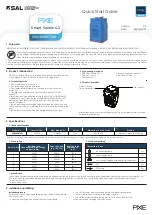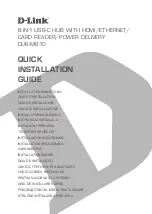
35-12
Catalyst 3560 Switch Software Configuration Guide
78-16156-01
Chapter 35 Troubleshooting
Preventing Autonegotiation Mismatches
Preventing Autonegotiation Mismatches
The IEEE 802.3AB autonegotiation protocol manages the switch settings for speed (10 Mbps, 100 Mbps,
and 1000 Mbps, excluding SFP module ports) and duplex (half or full). There are situations when this
protocol can incorrectly align these settings, reducing performance. A mismatch occurs under these
circumstances:
•
A manually set speed or duplex parameter is different from the manually set speed or duplex
parameter on the connected port.
•
A port is set to autonegotiate, and the connected port is set to full duplex with no autonegotiation.
To maximize switch performance and ensure a link, follow one of these guidelines when changing the
settings for duplex and speed:
•
Let both ports autonegotiate both speed and duplex.
•
Manually set the speed and duplex parameters for the ports on both ends of the connection.
Note
If a remote device does not autonegotiate, configure the duplex settings on the two ports to match. The
speed parameter can adjust itself even if the connected port does not autonegotiate.
Troubleshooting Power over Ethernet Switch Ports
If a powered device (such as a Cisco IP Phone 7910) that is connected to a PoE switch port and is being
powered by an AC power source loses power from the AC power source, the device might enter an
error-disabled state. To recover from an error-disabled state, enter the shut interface configuration
command, and then enter the noshut interface command.
Use these commands, described in the command reference for this release, to monitor PoE port status:
•
show controllers power inline privileged EXEC command
•
show power inline privileged EXEC command
•
debug ilpower privileged EXEC command
SFP Module Security and Identification
Cisco-approved small form-factor pluggable (SFP) modules have a serial EEPROM that contains the
module serial number, the vendor name and ID, a unique security code, and cyclic redundancy check
(CRC). When an SFP module is inserted in the switch, the switch software reads the EEPROM to verify
the serial number, vendor name and vendor ID, and recompute the security code and CRC. If the serial
number, the vendor name or vendor ID, the security code, or CRC is invalid, the software generates a
security error message and places the interface in an error-disabled state.
Note
The security error message references the GBIC_SECURITY facility. The Catalyst 3560 switch supports
SFP modules and does not support GBIC modules. Although the error message text refers to GBIC
interfaces and modules, the security messages actually refer to the SFP modules and module interfaces.
For more information about error messages, refer to the system message guide for this release.
















































